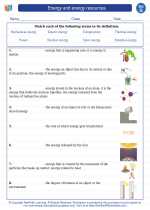Altitude
Altitude refers to the height of an object above a reference point, which is typically the Earth's surface. In the context of geography and aviation, altitude is often used to describe the height of an object above sea level.
Types of Altitude
There are several types of altitude:
- True Altitude: The vertical distance of a point above the mean sea level.
- Absolute Altitude: The vertical distance of an aircraft or spacecraft above the Earth's surface.
- Geopotential Height: The height of a pressure surface in the atmosphere, measured in units of length.
- Indicated Altitude: The altitude read directly from the altimeter.
- Pressure Altitude: The altitude in the International Standard Atmosphere at which the pressure is the same as the existing pressure.
Factors Affecting Altitude
Altitude is influenced by various factors such as:
- Geographical location
- Elevation of the land
- Atmospheric pressure
- Temperature
Effects of Altitude
Changes in altitude can have significant effects on living organisms and the environment. These effects include:
- Decrease in air pressure
- Thinner air with less oxygen at higher altitudes
- Impact on climate and vegetation
- Adaptations of organisms to high-altitude environments
Study Guide for Altitude
To understand altitude better, consider the following study guide:
- Define altitude and its relevance in geography and aviation.
- Explore the different types of altitude and their respective characteristics.
- Investigate the factors that influence altitude and their effects on the environment.
- Discuss the impact of altitude on living organisms and their adaptations to high-altitude environments.
By studying altitude comprehensively, you can gain a deeper understanding of its significance in various scientific disciplines.
.





